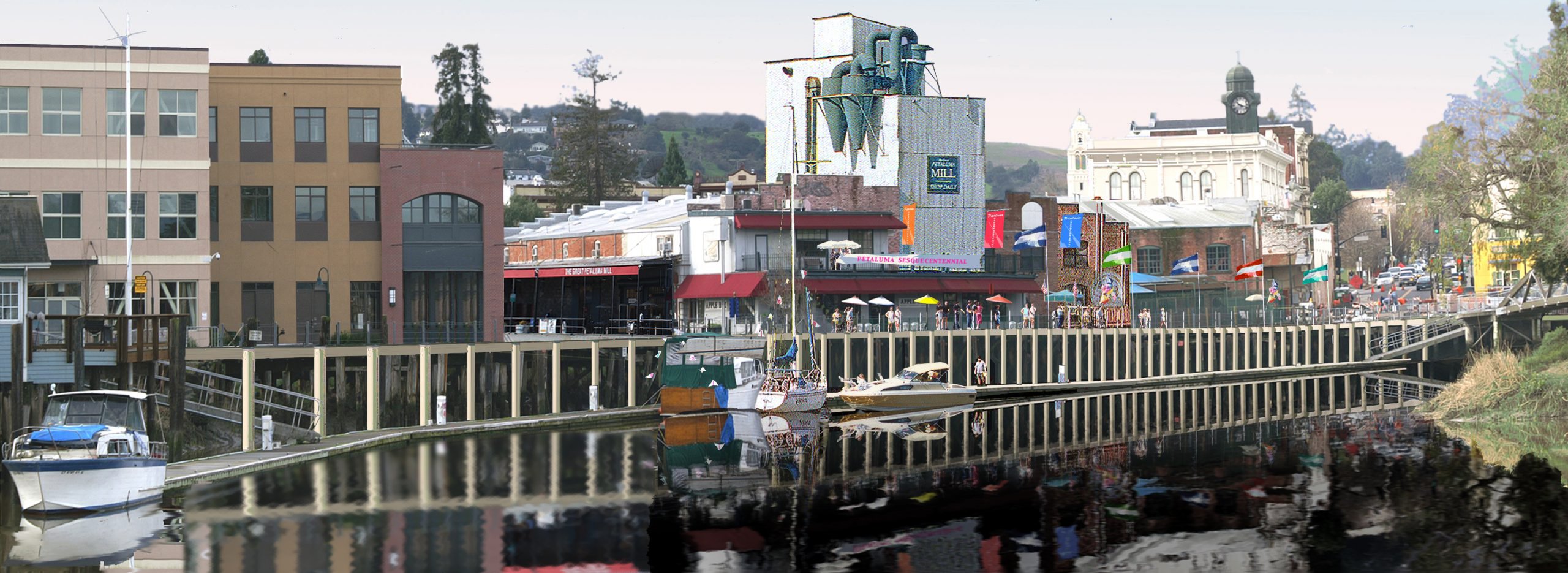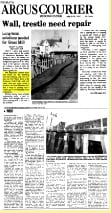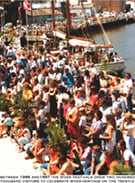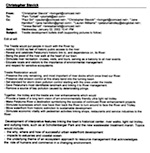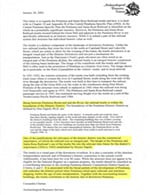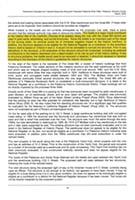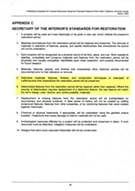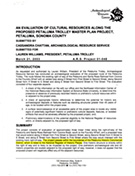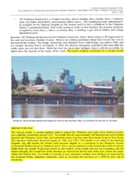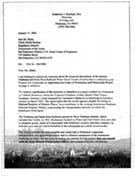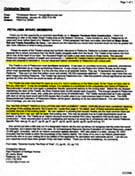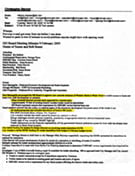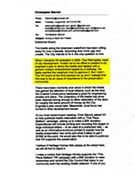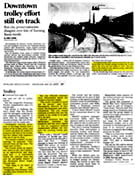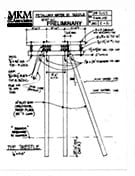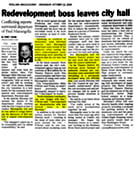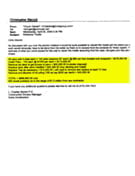| Date |
| Image or PDF |
3/21/03 | Archaeological Resource Service - "AN EVALUATION OF CULTURAL RESOURCES ALONG THE PROPOSED PETALUMA TROLLEY MASTER PLAN PROJECT"
Page 24
"If significant impacts such as removal of or alteration to the railroad tracks or associated structures, including the network of spur tracts, bridges, and track routes, are contemplated, these features should be thoroughly documented on DPR 523 forms prior to such impacts. Proposed impacts to structures that are of historical significance would need to be evaluated by a historian." "One significant historic structure, ... the trestle is to be retrofitted for stability and repaired to look as it did prior to 1960. The trestle appears to be eligible as a contributor to the existing Downtown Petaluma Historic District... The trestle is a major contributor to the historic feel of the downtown riverfront... All work should be conducted to the Secretary of the Interior's Standards to ensure the historic visual integrity of the railroad trestle after repairs".
|  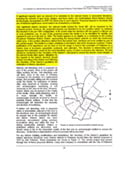 |
3/21/03 | The 3 pages above were extracted from the full document reproduced here:
“An Evaluation of Cultural Resources Along the Proposed Petaluma Trolley Master Plan Project, Petaluma, Sonoma County
Submitted for Lauren Williams, President, Petaluma Trolley” by Cassandra Chattan, Archaeological Resource Service |  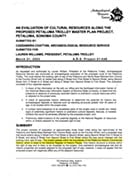 |
5/20/03 | Update on revised 2003 CPSP (Central Petaluma Specific Plan) to members of Heritage Homes, From Chris Stevick, President of Heritage Homes
Alerting members to push City Council to add 3 changes to the Central Petaluma Specific Plan before approval at the Council's next meeting: - Height limit of 3 stories on new structures next to historic structure
- Give SPARC full powers of review
- Create an Inventory of Historic Structures
|  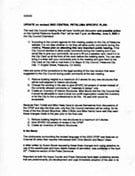 |
2000-2005 | Paul Marangella, hired by the City of Petaluma to be Director of Economic Development and Redevelopment, held control of redevelopment funds and had his own ideas about the Railroad Trestle. He wanted to start by completely removing the original Trestle and then building a modern concrete and steel platform to replace it. He had no interest in restoring the trestle as an historic structure. | |
2004 | The engineering firm known as CSW[St]2 was hired to assess the structural integrity of the trestle and develop design solutions for making it safe. | |
3/9/04 | CSW[St]2 sends a letter to Paul Marangella that they have revised their proposal in accordance with his request (this letter dated 3/9/04 came to light months later). "Pursuant of your request, we have modified our proposal to provide professional consulting services on the Trestle Area Renovation"… "The project scope will include preparing plans for the removal of the existing Trestle"
Editor's comment:
It can be inferred that CSW[St]2 had previously explored the possibility of restoring the existing structure, but this letter indicates they were directed by Marangella to take restoration off the table entirely.
This makes it clear that Marangella decided early on to only consider plans beginning with the demolition of the Trestle. CSW[St]2 will now take demolition as a starting point and focus on designing a completely new replacement structure.
Marangella had his mind set on this demolition-based solution despite the rather obvious observation that demolition would cost at least as much as restoration plus the additional cost of a new structure built from scratch.
In his own presentation to Heritage Homes later on 2/9/05 he stated that the design phase had run to $107K and demolition would take another $400K. So the plan and the demolition by itself would consume the $500,000 provided by the City of Petaluma from redevelopment funds for the Trestle problem, leaving nothing for the additional cost of new construction.
|  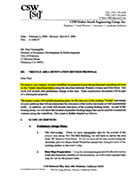 |
| 10/13/04 | Chris, in his role as president of the Petaluma Heritage Homes association (2001-2004), had several private meetings with Paul Marangella. Trying to convince HH to give up on trying to restore it, Marangella insists the downtown Trestle can’t be saved. In support of his argument he makes several assertions that Chris, in turn, sought evidence to refute. (though made often, most of the following statements come from Chris’s notes made at a meeting with Paul Marangella and John FitzGerald on October 10, 2004)
Statement 1. “The rotten piles are too far gone.“ Reply: Since the wooden piles are driven a minimum of 30 feet into the soil below the low water line where the conditions are anoxic (no oxygen can get to them so they cannot deteriorate) all rot & decay occurs only above that low water line. Only the upper rotten portion need be reinforced or replaced and connected securely to the intact lower piling, by one of several possible methods approved by structural engineers and with a history of successful use in other locations. Some type of sleeve or tube sufficient to support the load, connect securely to the good lower portion of the pile, and provide a form for cement or other aggregate to fill in the decayed portions.
Statement 2. “No engineer would put his stamp on a wooden trestle.“ Reply: Chris Stevick consulted several independent engineers who stated that many wooden trestles were currently being approved around the US. As further proof, Chris hired MKM Associates, a structural engineering firm, to come up with an official, stamped set of  timber Trestle drawings that clearly show the possibilities and refute Marangella's assertion. timber Trestle drawings that clearly show the possibilities and refute Marangella's assertion.
Statement 3. “The State Coastal Conservancy would not allow it.” Reply: The State Coastal Conservancy actually required that any trestle redevelopment include preserving as much of the original structure as possible, maintaining the original design and that replacement materials should be the same as the original or from the most similar available materials.
Statement 4. “SMART sees trestle as liability”. Reply: Chris Stevick was on the "Friends of SMART" committee, consisting of local people interested in promoting the proposed train system, familiar with SMART activities. At the time SMART was completely unconcerned with the Trestle, which was included when they purchased the right of way to the tracks from Larkspur landing to Cloverdale. They didn't need the Trestle and would be glad to sell it to Petaluma for a nominal fee.
Statement 5. "It isn't a historic site, so not included in the Historic Downtown District"
Reply: Marangella is directly contradicted by statements in the letter from Cassandra Chattan, of ARS, dated 1/28/02 (see above). The Trestle is already a Historic Structure by California standards, which require it to be rebuilt in a manner as similar to the original as possible. It is within the boundary of the Historic District, and more importantly, constructed by McNear during that period in Petaluma History that later legitimized the Historic District as worthy of protection. Marangella’s logic is an inversion of the fact that it would actually be eligible for the National Historic Register (formal, National recognition of its Historic significance) on the condition that it be restored.
When Chris was still unwilling to go along with the Trestle demolition, Marangella resorted to threats to withdraw support for the Trolley Project, an attempt to intimidate him into approving the plan.
Editor's note:
At the time, Chris was trying to get the Petaluma Trolley project off the ground using the existing tracks, a project later abandoned for financial reasons. Despite threats he refused to endorse the demolition of the Trestle.
| |
| 8/4/04 | Argus Article, "River Promenade Taking Shape" describes Marangella's preferred plan (demolish the Trestle). “The old wooden railroad trestle that begins at the intersection of Western Avenue and Water Street will be torn out due to rotting pillars at the waterline," Marangella said. "They're just too far gone," he said. "It cannot be salvaged."
|  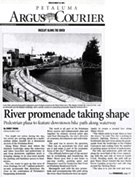 |
| 8/12/04 | A letter to Dusty Resneck (Petaluma Pedestrian& Bicycle Advisory Committee) from Joyce Clark, PE, Program Manager, Economic Development and Redevelopment, City of Petaluma, asking for clarity in reference to the Argus article of 8/4/04 about the Trestle being unsalvageable. Her reply was forwarded to a member of Heritage Homes. The letter states that the design process has begun, assuming the old structure will be removed. This is the first suggestion that Marangella's plan would be a "win/win" just because the new structure will follow the original footprint and also retain the existing railroad tracks (the possibility of running a trolley was still being considered). It's clear that the destruction of the original Trestle was considered a "done deal" within the Economic Development and Redevelopment Department.
|  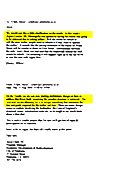 |
| 11/23/04 | C.V. Larsen Co. sends letter to Chris, reviews exiting Trestle and estimates cost of rehab at between $1,000 and $2,000 per lineal ft. Trestle is approximately 500 ft long, so high estimate = $1,000,000. |  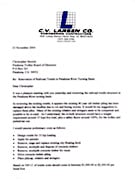 |
| 12/17/04 | Paul Marangella presents plans and concept drawings of how nice the River would look with Trestle gone. Described as “win/win.” The concept drawings are just 3D renderings of what the replacement for the trestle might look like, based on redirected tracks and rough footprint of old trestle. These are just artist's conceptions, no architect involved, they are undated & unsigned, just to give a rough idea without specifics.
|  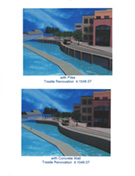 |
